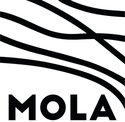Moorgate Shaft, 91-109 Moorgate (Crossrail XSP10)
Museum of London Archaeology, 2019. https://doi.org/10.5284/1055108. How to cite using this DOI
Data copyright © Crossrail Ltd, Museum of London Archaeology unless otherwise stated
This work is licensed under a Creative Commons Attribution 4.0 International License.
Primary contact
Karen
Thomas
Head of Archive
Museum of London Archaeology
Resource identifiers
- ADS Collection: 3008
- DOI:https://doi.org/10.5284/1055108
- How to cite using this DOI
Introduction

Four evaluation trenches and a watching brief on three boreholes in the basement of the building revealed natural gravels and brickearth overlain by a clay make-up layer containing sherds of pottery dated to AD 120-200.This was cut by an undated pit which was sealed by a dump deposit containing pottery of AD150-200. Whilst this probably represents preparation for Roman extra-mural activity, no evidence for the nature of that activity was present. Overlying this layer was an organically rich clay silt deposit identified as the late Roman or medieval Moorfields Marsh. All later remains had been truncated by the construction of the modern basement.
A watching brief was undertaken on utilities diversion trenches, access shafts and a borehole. The borehole, in the basement of 8 Moorfields, revealed a possible rubbish pit which contained a selection of animal bone, a piece of degraded leather and two sherds of 14th-century Surrey Border Ware pottery, probably residual. These formed part of a larger assemblage including tile and oyster shell. A trench within the basement of the same building exposed only 20th-century material. Further S on London Wall within a deep tunnel connected to a drop shaft, a series of layers of 16th- to 17th-century date were recorded in section. Finds included a near complete Dutch Bartmann jug and the location, depth and condition of the material suggests that they were discarded over a relatively short period, with little subsequent disturbance and may lie within the City Ditch. A second drop shaft to the west was filled with rubble, possibly as a result of general ground clearance and levelling following WW2.The majority of the trenches uncovered services constructed during the latter half of the 20th-c sealed by modern ground services. Other works in the vicinity, including at 87 Moorgate, Fore Street Avenue, Ropemaker Street and in the roadway at 91-109 Moorgate all exposed only 20th-century made ground, services, concrete and tarmac.
The diversion of a large N-S aligned 19th-century sewer and the insertion of 4 manholes, as well as general ground reduction in the north-western area of the site, were monitored. In the southern part of the site natural gravels were overlain by either the base of a heavily truncated pit or a Roman deposit modified by the formation of the Moorfields marsh. Overlying this were Roman or medieval marsh deposits A single adult human bone recovered from the marsh may be from a Roman inhumation, given the lack of known medieval cemeteries in the immediate vicinity, and was probably washed into the site by Walbrook tributaries and/or the marsh formation process. This was sealed by a thin soil horizon, representing the drying or drainage of the marsh and probably dating to the 15th to 16th-centuries. In the southernmost part of the site, 19th-century timber shoring for the cut-and-cover sewer construction was found in situ and had truncated all earlier deposits to 4.1m below ground level. The sewer itself, designed by Sir Joseph Bazalgette (1819-1891), measured 1.5m wide and was constructed in an innovative inverted egg-shaped design. In the northern part of the site, the natural gravels were heavily truncated by 20th-century foundations for Moorgate London Underground station. The foundation piers for the station were set at least 6m beneath ground level, well below the level of archaeological survival.
Ground reduction in the future Moorgate shaft exposed heavily truncated naturally deposited sandy clays. A thin, homogenous probably waterlain clay deposit represented the earliest human activity on site-probably Roman. Two distinct E-W aligned ditches, both approximately 1.5m wide and 0.6m deep situated 15m apart, and probably excavated for drainage, yielded Roman material, including: samian pottery, a human jaw (probably washed into the site by Walbrook tributaries) and an assortment of animal bone. Associated, were a variety of stakes and postholes, apparently representing fence alignments and possibly a ditch crossing in the NW of site. Other shallow Roman features, had been modified by the formation of the Moorfields marsh, sometime during the late Roman, or as finds (leather and pottery) from here suggest- the early medieval period. Horizontal truncation limited marsh survival across the site, particularly in the north, removing all later deposits. Activity was limited to features cutting the marsh including: a rubbish pit (c 15th-16th -c), containing large quantities of animal bone, pottery and leather, a heavily truncated hooped wattle structure, and a circular pit lined with large chalk blocks - possibly a column/pier foundation, partially robbed out and backfilled during the post-medieval period. Nineteenth and 20th-century foundations had severely truncated the NE of the site, along with occasional deep concrete piers in the SE and S.





